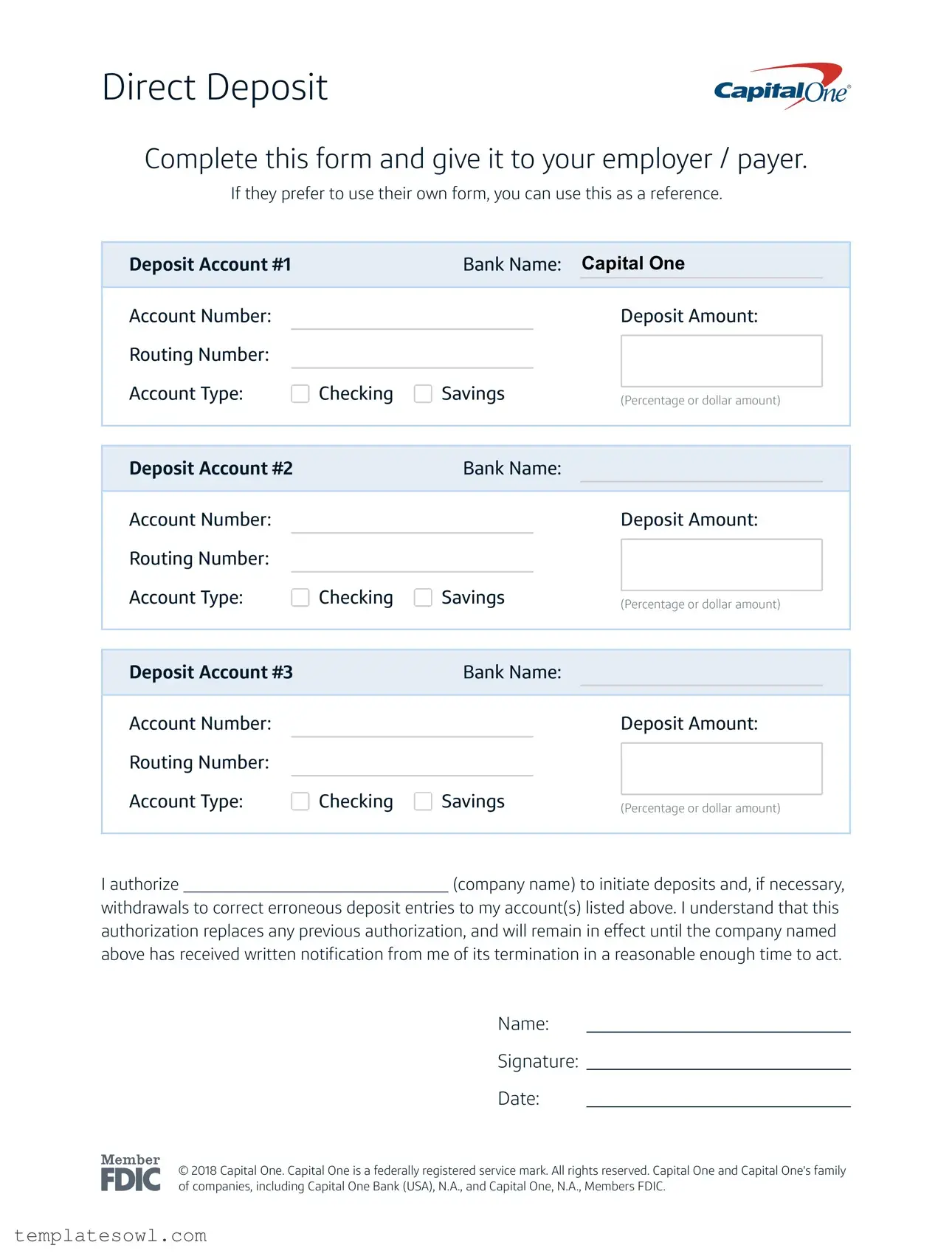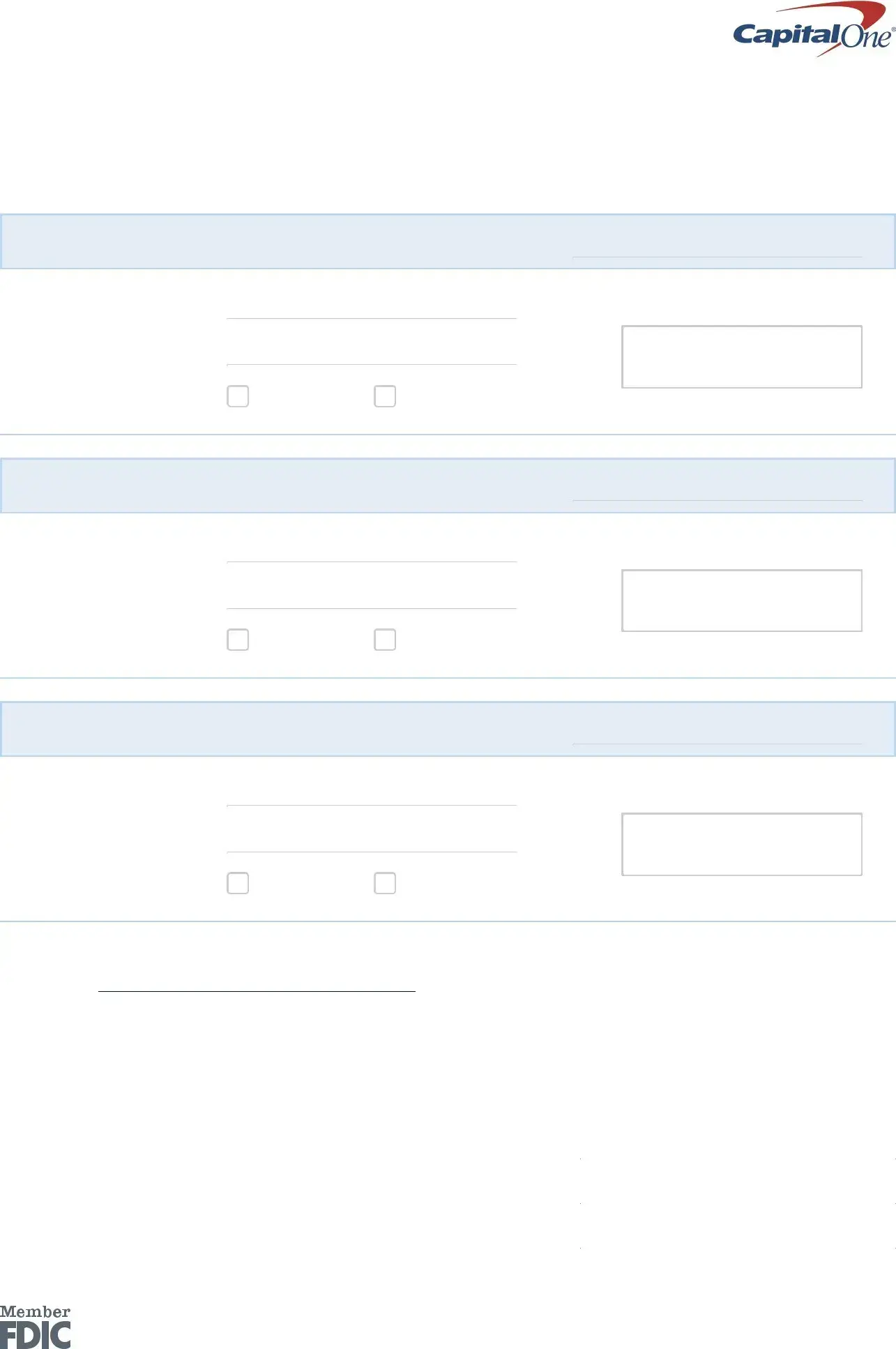What is the Capital One Direct Deposit form used for?
The Capital One Direct Deposit form is used to authorize your employer or payer to deposit funds directly into your Capital One account. By completing this form, you provide the necessary account details, ensuring that your paychecks or other payments arrive in your chosen account without delay.
How do I fill out the Capital One Direct Deposit form?
To complete the form, fill in your Capital One account number, routing number, and select whether the account type is checking or savings. You can designate up to three accounts for deposit, specifying the deposit amount or percentage for each. Finally, provide your name, signature, and date at the bottom of the form.
Can I use this form if my employer has their own direct deposit form?
Yes, you can use the Capital One Direct Deposit form as a reference if your employer prefers to use their own form. Ensure that your account information is provided accurately on whichever form is used, to avoid any issues with payment processing.
What should I do if I need to change my direct deposit information?
If you need to change your direct deposit information, complete a new Capital One Direct Deposit form with the updated details and submit it to your employer or payer. This new form will replace any previous authorization. Make sure to notify them in writing to allow sufficient time for the changes to take effect.
Is there a waiting period to start receiving direct deposits after submitting the form?
There may be a waiting period for your direct deposit to begin after you submit the completed form. This timeframe can vary depending on your employer or payer. It is advisable to confirm with them when the direct deposit will commence once the form has been submitted.
What happens if there is an error with my direct deposit?
When you authorize your employer to deposit funds directly, you also allow them to initiate withdrawals to correct any erroneous deposits. This is specified in the form, protecting both you and your employer should an error occur with the payment entries.
What do I do if I want to stop direct deposits to my account?
To terminate your direct deposit authorization, you must provide written notice to your employer or payer. Make sure to give them adequate time to process this request, as specified in the form. Until they confirm the termination, any existing authorizations will remain valid.

